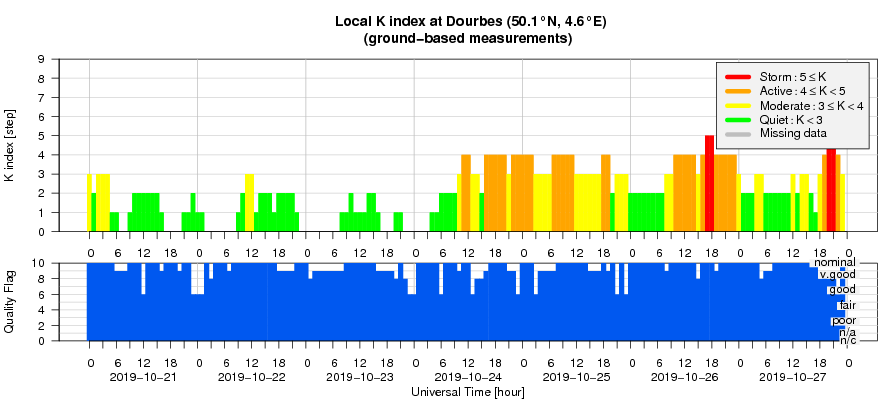- Table of Content
- 1.PROBA2 10 year...
- 2.Solar EUV and ...
- 3.Review of sola...
- 4.PROBA2 Observa...
- 5.The Internatio...
- 6.Review of geom...
- 7.Geomagnetic Ob...
- 8.The SIDC space...
- 9.Review of iono...
2. Solar EUV and its effect on space instruments
3. Review of solar activity
4. PROBA2 Observations
5. The International Sunspot Number by SILSO
6. Review of geomagnetic activity
7. Geomagnetic Observations at Dourbes
8. The SIDC space weather Briefing
9. Review of ionospheric activity
PROBA2 10 years in space!
On November 2, the ESA satellite PROBA2 will be celebrating its 10th anniversary. Not too bad for this small Belgian spacecraft that was initially intended for a two-year mission!
During these ten years, PROBA2 has been used for testing pioneering technologies in space conditions. New types of solar panels, on-board computer, star tracker, propulsion system, etc., have been embarked on the spacecraft to demonstrate their performances and will potentially be used on future, bigger and more expensive projects.
But PROBA2 cannot be reduced to a purely technical mission. The payload also includes four scientific instruments, among which two observing the Sun: the telescope SWAP, observing the solar corona in the extreme ultraviolet and the radiometer LYRA, which measures the total irradiance emitted by the Sun at high cadence in four channels going from the soft X-rays to the ultraviolet.
Both SWAP and LYRA have been conceived by researchers at the Royal Observatory of Belgium and are operated by the same team. Over ten years, these instruments have provided observations of flares, coronal mass ejections and other manifestations of solar activity with a very high-cadence and an unprecedented large field-of-view, and they have helped forecasting their effects on the Earth environment. Today, while the scientists at the Observatory continue their investigation of almost a full solar-cycle of data collected, PROBA2 is still in an excellent shape and remains one of the few satellites used by European space weather forecasters to detect solar eruptions. And soon, the PROBA family will be extended with another solar satellite: PROBA-3 is indeed under preparation and should be launched late 2021.
Happy birthday PROBA2!!!
.jpg)
More info on PROBA2 can be found at https://proba2.sidc.be
Solar EUV and its effect on space instruments
From October 14 to 18, a group of about 20 scientists working with the main instruments observing the Sun in the soft X-rays to ultraviolet wavelength range gathered in Brussels to attend a technical workshop dedicated to the space instruments calibration. This workshop was organized by the STCE and builds on a long-term collaboration between the PROBA2 instrument team at the Royal Observatory of Belgium and the Laboratory for Atmospheric and Space Physics, Boudler, Colorado.
During this workshop, data acquired by spectrometers, radiometers and imagers were detailed and compared, so as to identify the main sources of uncertainties affecting the measurements and ensure their best possible calibration. A special attention was devoted to the analysis of the degradation processes that affect most space instruments.
"Space is a harsh environment in which materials, electronics, etc, quickly deteriorate.", said Marie Dominique, PI of the LYRA radiometer and main organizer of the event, "This progressively affects the measurements. To be able to correct for those effects, we need to better understand them. Comparing the problems encountered by the various instruments currently in orbit helps us greatly in this analysis and will allow us to avoid repeating some mistakes when designing future missions."
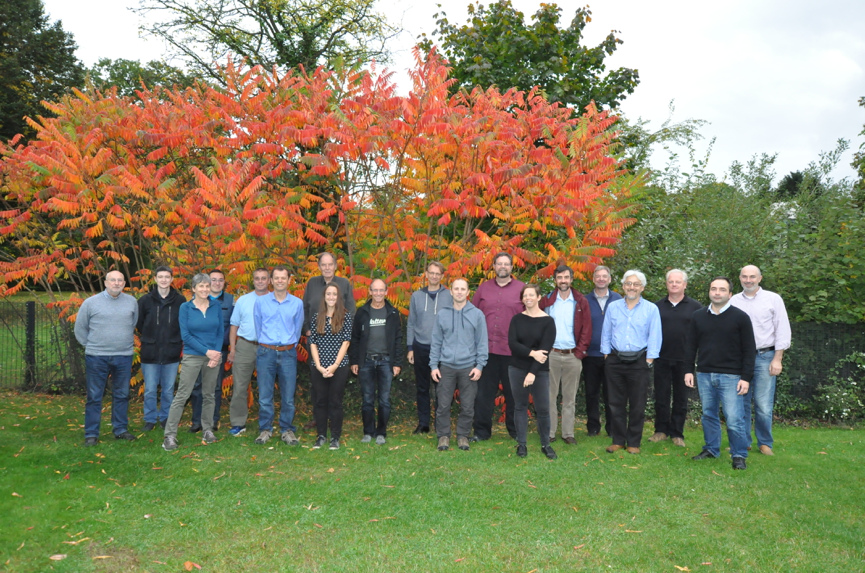
Workshop website: https://events.spacepole.be/event/65/
Review of solar activity
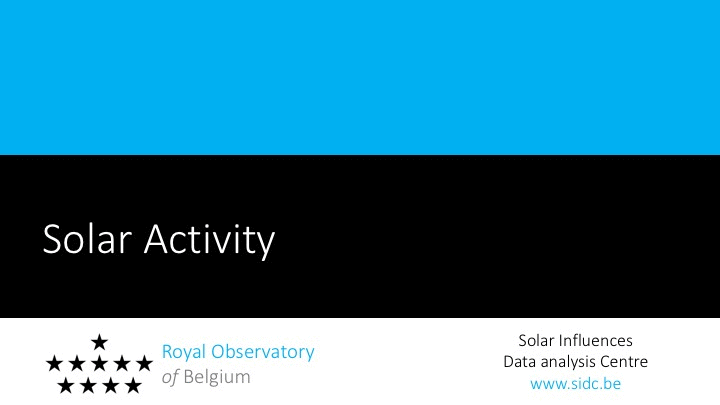
Solar X-ray flux was below the background level. No active regions were present.
On October 25, at 9:42UT a slow faint CME front is visible towards the South in SoHO/LASCO C2 coronagraph images. STEREO A/COR2 images show a clear Westbound CME with slow speed (200-300 km/s).
A negative polarity coronal hole transited the central meridian and is expected to influence Solar wind from October 30 onwards.
Solar high energy proton fluxes were at background levels throughout the week.
PROBA2 Observations
Solar Activity
Solar flare activity remained very low during the week.
In order to view the activity of this week in more detail, we suggest to go to the following website from which all the daily (normal and difference) movies can be accessed: http://proba2.oma.be/ssa
This page also lists the recorded flaring events.
A weekly overview movie can be found here (SWAP week 500): http://proba2.oma.be/swap/data/mpg/movies/weekly_movies/weekly_movie_2019_10_21.mp4
Details about some of this week's events can be found further below.
If any of the linked movies are unavailable they can be found in the P2SC movie repository here: http://proba2.oma.be/swap/data/mpg/movies/
Tuesday Oct 22
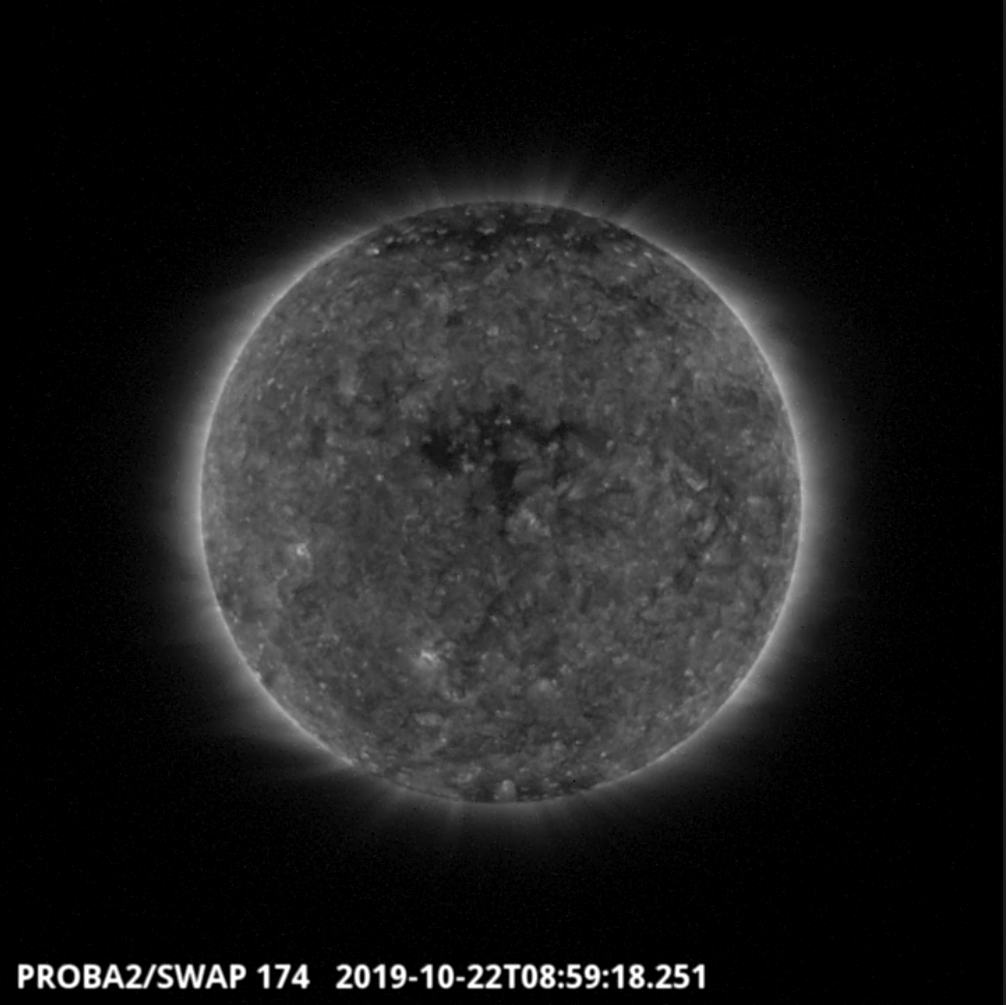
A large, low-latitude coronal hole of positive polarity was observed by SWAP as it crossed the central meridian on 2019-Oct-22.
Find a movie of the day here (SWAP movie): http://proba2.oma.be/swap/data/mpg/movies/20191022_swap_movie.mp4
The International Sunspot Number by SILSO
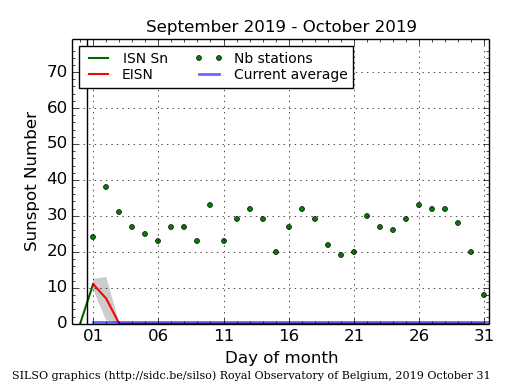
The daily Estimated International Sunspot Number (EISN, red curve with shaded error) derived by a simplified method from real-time data from the worldwide SILSO network. It extends the official Sunspot Number from the full processing of the preceding month (green line). The plot shows the last 30 days (about one solar rotation). The horizontal blue line shows the current monthly average, while the green dots give the number of stations included in the calculation of the EISN for each day.
Review of geomagnetic activity
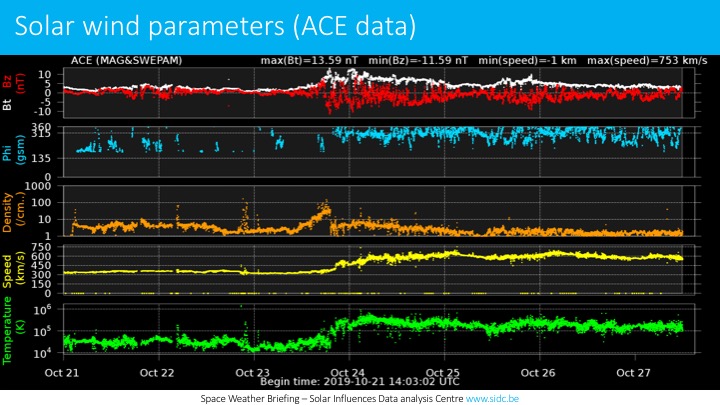
Solar wind showed the passage of the expected recurrent high speed stream associated to a positive polarity coronal hole. The high speed stream set in around noon October 24. It reached around 700 km/s and lasted fluctuating between 550-650km/s until the end of the week (72 hours). The magnetic field reached a peak of close to 14nT. Bz was variable but sustained negative for some periods of time. These solar wind parameters all refer to in situ measurements in the L1 point.
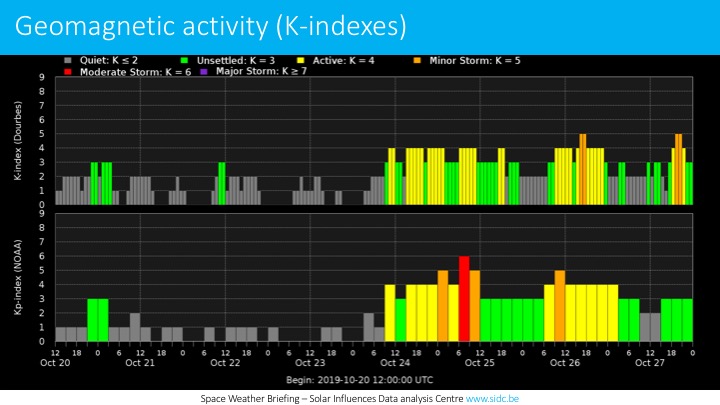
Geomagnetic conditions reached minor (both NOAA Kp and local K Dourbes 5) and moderate (an isolated episode of Kp 6) storm levels as a result of the high speed stream.
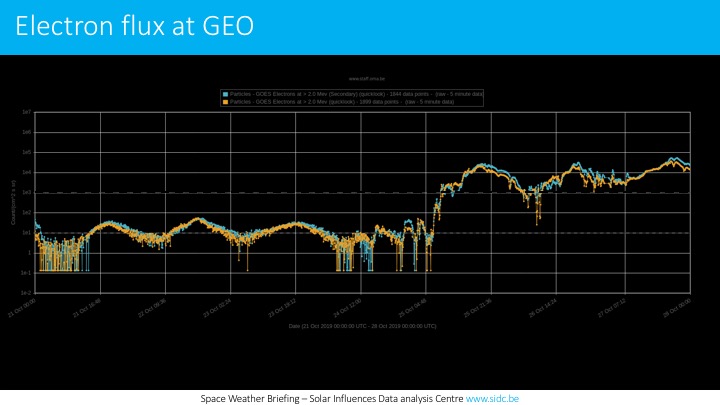
2 MeV electron fluxes were enhanced associated to the high speed stream.
The SIDC space weather Briefing
The Space Weather Briefing presented by the forecaster on duty from October 20 to 27. It reflects in images and graphs what is written in the Solar and Geomagnetic Activity report.
The pdf-version: http://www.stce.be/briefings/20191028_SWbriefing.pdf
The automatically running presentation: http://www.stce.be/briefings/20191028_SWbriefing.ppsm
Review of ionospheric activity
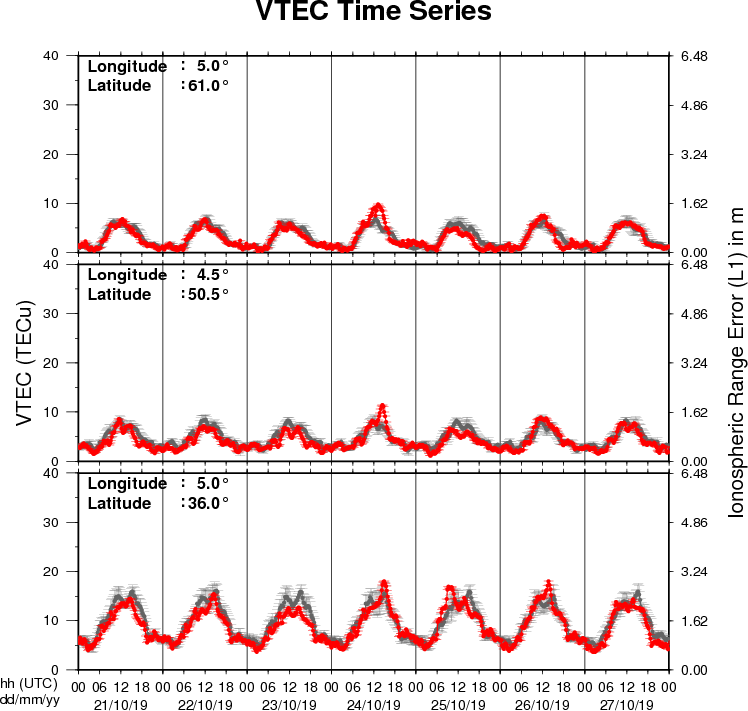
The figure shows the time evolution of the Vertical Total Electron Content (VTEC) (in red) during the last week at three locations:
a) in the northern part of Europe(N61°, 5°E)
b) above Brussels(N50.5°, 4.5°E)
c) in the southern part of Europe(N36°, 5°E)
This figure also shows (in grey) the normal ionospheric behaviour expected based on the median VTEC from the 15 previous days.
The VTEC is expressed in TECu (with TECu=10^16 electrons per square meter) and is directly related to the signal propagation delay due to the ionosphere (in figure: delay on GPS L1 frequency).
The Sun's radiation ionizes the Earth's upper atmosphere, the ionosphere, located from about 60km to 1000km above the Earth's surface.The ionization process in the ionosphere produces ions and free electrons. These electrons perturb the propagation of the GNSS (Global Navigation Satellite System) signals by inducing a so-called ionospheric delay.
See http://stce.be/newsletter/GNSS_final.pdf for some more explanations ; for detailed information, see http://gnss.be/ionosphere_tutorial.php
